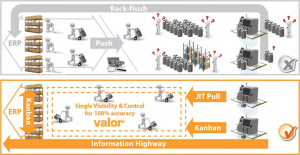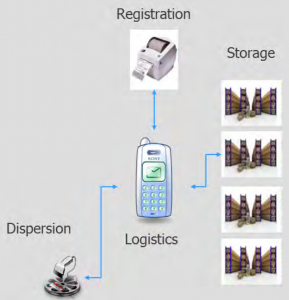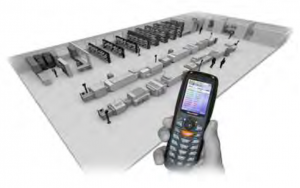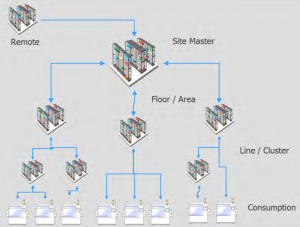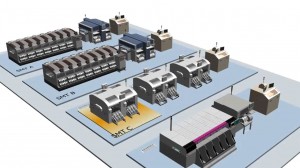 Emerging European models to retain competitiveness sees Industry 4.0 as Germany’s newest drive to build industrial strength. One of the key principles behind it is flexibility of planning, to be able to quickly adjust production rates and meet changing customer demands. The physical stranglehold that material work-in-process (WIP) has on the shop-floor affects materials costs, and is also a physical barrier limiting the opportunity for changes to production plans. In this context, total material control is mandatory for success.
Emerging European models to retain competitiveness sees Industry 4.0 as Germany’s newest drive to build industrial strength. One of the key principles behind it is flexibility of planning, to be able to quickly adjust production rates and meet changing customer demands. The physical stranglehold that material work-in-process (WIP) has on the shop-floor affects materials costs, and is also a physical barrier limiting the opportunity for changes to production plans. In this context, total material control is mandatory for success.
by Michael Ford, Mentor Graphics
In electronics manufacturing, the cost of materials can easily represent around 90% of the cost of the end-product. The factory is not meant to be a profit center for an OEM manufacturer, but the manufacturing budget is still critical to the business as a whole. But for electronics manufacturing services (EMS) companies, where materials are also sourced, the majority of profit comes from manufacturing.
Significant risk comes for those EMS companies that are working with consigned materials, however, in the form of penalties if additional materials are required unexpectedly on short notice. The materials that are part of the end-product are a fixed cost but there are additional material related costs that should, and can, be controllable. The most important materials costs that can be controlled are the investment cost of excess inventory, the cost of space needed to store the materials, and the cost of additional logistics operations required to manage and move materials. Additional costs also a result of lost production time because of the lack of control of material inventory. Work-orders can suddenly starve of materials for no good reason, and often unbelievable amount of inventory has to be written off from time to time during stock count. Consider an example case, based on results seen in the industry, in which materials typically represent 80% of the manufactured product. By eliminating the 50% excess materials stock, at an 8% investment rate, 11% gross operational profit could be added to the bottom line. This can actually be more significant than differences in the cost of manufacturing between high and lost cost labor areas.
Legacy materials
Looking at materials systems in electronics manufacturing today, enterprise resource planning (ERP) systems are still the mainstay of the shop-floor material supply-chain, using material supply flows that date back to the 1970s. However, the products, the technologies, and the art of manufacturing have moved on since then. How can we still expect outdated ERP systems by themselves to optimally adapt to the latest needs of manufacturing?
The core issue with today’s legacy materials management systems is that there is no single responsibility to manage all materials in the supply chain across the whole operation. ERP systems generally cannot track materials effectively once they have been allocated to the production area. Even traditional manufacturing execution systems (MES), are challenged because they are predominantly manual operations; and for complex manufacturing environments that use surface mount technology (SMT), manually operated MES often add more operational cost than benefit. Materials are consumed by SMT at very high rates and can exhibit uncontrolled invisible spoilage. SMT machine vendors provide a variety of information about material usage and spoilage; but without useful standardization in the industry, no ‘off-the-shelf’communication capability exists between the shop-floor processes and traditional materials systems.
Single system
What is really needed is a single point of management and accountability of all of the materials no matter what they are or where they are. Accurate and timely consumption information needs to be fed back to ERP to maintain inventory accuracy, that is, to ensure that the count of materials available recorded by ERP matches the physically available material. Only by keeping the ERP records accurate can the MRP engine work effectively to ensure that materials orders and deliveries will be on-time. Another material management best practice is to deal with the unmanaged part-used materials for WIP that accumulates on the shop-floor when work-orders finish.
To take total control of materials, the legacy operation has to be replaced with a lean, just-in-time manufacturing operation. In the traditional process shown in the top half of Figure 1, ERP pushes materials to the shop-floor according to the master factory plan. The materials end up being unmanaged and invisible from a supply-chain perspective until a significant time later, when a record comes back of consumption which is calculated by counting the number of products made multiplied by their quantities per product according to the original production bills of materials (BOMs). As shown in the bottom half of Figure 1, materials are all accounted for and visible at all times. Materials are delivered to the shop floor only as needed, driven by a lean materials logistics system, with material consumption reported back to ERP in a continuous basis.
Figure 1
Accuracy
The heart of the problem with the legacy system is the issue of maintaining inventory accurately. Of course, material spoilage is a fact of life in electronics manufacturing. A number of practices have evolved to cope with the effects of inventory inaccuracies, but they also have compromised the operation in many ways.
One method to stop the unexpected starvation of materials at the machine is to require that the warehouse prepare complete kits of materials needed to complete each work-order in advance for production. While this approach may seem effective, it requires a large up-front commitment of materials to the shop-floor. Other methods include counting part-used materials back into the warehouse, increasing buffer stock and performing regular stock takes.
However, over a year in a reasonably sized manufacturing operation, the amount of material write off can be measured in millions of dollars. Worse still is that significant amounts of obsolete materials are discovered, raising the cost of inventory inaccuracy significantly more again. This loss can destroy the manufacturing budget and significantly affect the bottom line of the business.
A lean approach
No matter then what countermeasures continue to evolve, unless the root cause of the problem is addressed, the issue will never diminish. A lean approach to supply chain enhancement can address the initial principles of operational needs and is based on what is possible through the adoption of today’s technologies. With modern solutions, we should expect results quite different, and much better, from the information technologies available in the 1970s.
The first part of the Valor solution is to label each materials carrier with a unique identification, usually with a barcode label, as part of the receiving process and in conjunction with ERP. Information about each material is captured by reading barcodes placed on the reels by the manufacturer, which enables attributes to be stored on a materials carrier basis. Within one single database, every individual material can be accounted for at any time (Figure 2 below).
The warehouse locations structure is also managed. Locations are assigned attributes, for example, to define the family or type of materials to be stored. Materials have their attributes matched as they are assigned to a location, continuously optimizing the use of storage space.
In addition, whenever materials are moved from one location to another, handheld mobile devices are used to guide materials operators through the operations, with simple step-by-step instructions (Figure 3). Verification of materials is done at each stage to ensure that the right action has been performed on the right material.
Material tasks are automatically managed by a central material task generator. All of the material logistic needs are prioritized to ensure that all key materials operations are completed in time and that the maximum effectiveness of operators is maintained. Material tasks include the put-away of materials into the warehouse after receipt, the selection of materials from the warehouse to manufacturing, part-used material returns from the shop-floor and, when time is available, a warehouse location integrity check. All these tasks together ensure the most efficient and secure material logistics operation.
The logistics engine of the Warehouse Management software includes the movement of materials between warehouses (Figure 4). Where a hierarchy of warehouses is defined, the software can automatically ensure that materials close to production are kept replenished on a min/max basis using an automated kanban system. When the logistics engine requires materials to be selected from the warehouse, there is a fully automated material selection mechanism with configurable rules to suit any operational needs. As well as the standard first-in, first-out logic, the advanced material selection criteria can consider using part-used materials in the most effective way, prioritizing the use of materials already loaded onto compatible feeders.
Figure 4
Just-in-time logistics
The Materials Management solution selects materials for the shop-floor only as needed. This is calculated by the system according to a lean ‘pull’ signal derived directly from the machine operation. This means that there are no prepared kits of materials in advance allocated to manufacturing; instead, all materials remain in the warehouse ready for selection for immediate use on the machines and other processes. This pull signal is created using several pieces of information about the product being manufactured, the progress of the manufacturing process, a look-ahead to what work-orders will be run next, logistics capacities, and some special parameters unique to SMT production such as family setups, trolleys etc.
The verification of materials during the logistics process extends to the setup of materials on the machines. The solution prevents the machine or any other process from working until all of the materials have been correctly set up, according to the requirement defined in the work-order. The use of unique material IDs and associated attributes is verified against the assigned set-up derived from the work-order. This is a far more comprehensive verification than simply checking the part number as is done by many other solutions. For example, the MSD status is also checked, providing a warning and if necessary preventing the machine execution if contamination is likely.
The final essential piece of information required for the just-in-time delivery of materials to work is the live interface from the machine processes, through which the progress of production, in terms of the number of PCBs produced, is communicated, along with the actual usage and spoilage of each of the materials.
The system automatically decrements the count of materials on each reel and calculates the likely continuing rate of consumption on the machine. This is converted into a requirement time and fed into the material logistics engine to order material replenishments. As the end of the work-order approaches, the look-ahead for the requirement extends automatically to the next work-order. If a specific material is also used on the next work-order, the new usage rate will be taken in to account. Therefore, duplicate materials delivery is avoided. New materials needed from the changeover onward will be delivered just in time for the change-over. Those materials that are part of the current work-order and not needed on the next will be flagged to be returned to the warehouse.
Information highway
Another key issue for ERP is the time that it takes for the ERP back-flush logic to account for materials used. The Information Highway software uses the data from the machine processes in terms of product completions and exact materials usage and spoilage, making it available to ERP on a continuous basis. Inventory viewed in ERP will now match precisely to the actual physical inventory, allowing far more accurate and timely operation to order materials.
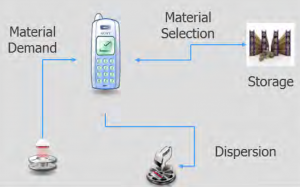
Figure 5: Advanced material selection criteria can consider using part-used materials in the most effective way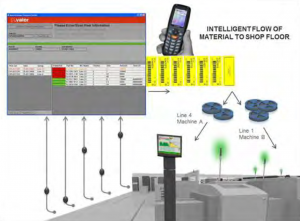
Figure 6: Materials management enables an intelligent flow of material to the shop floor

